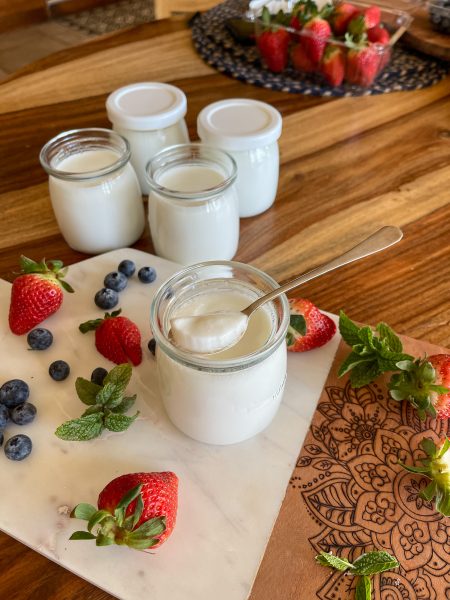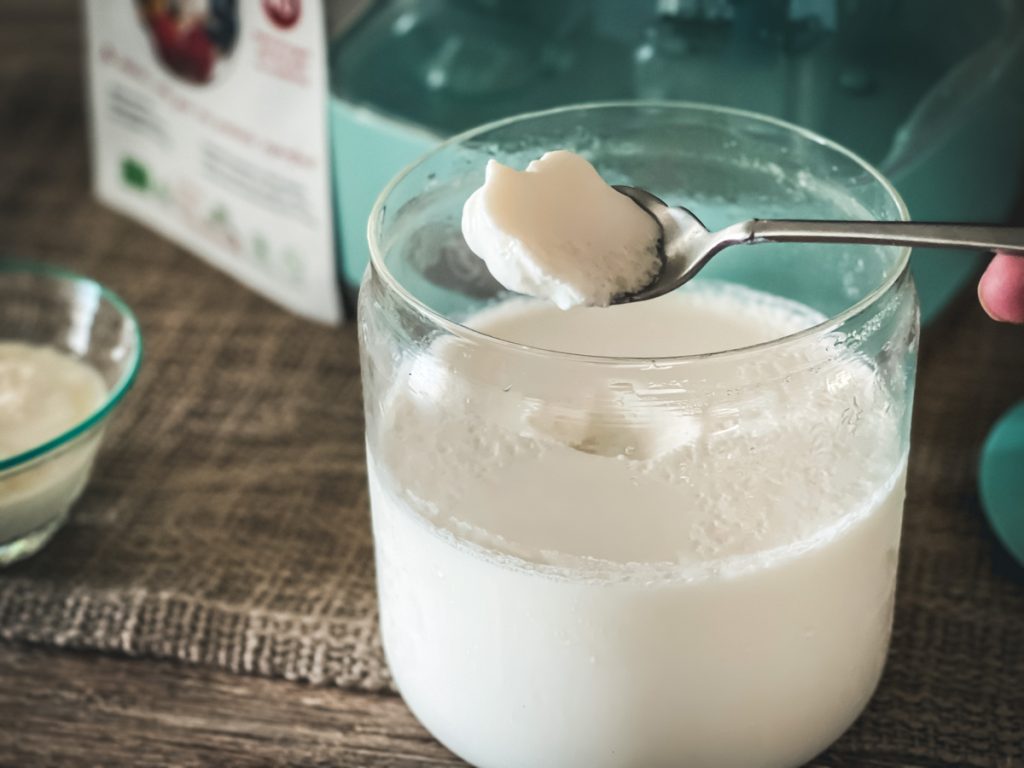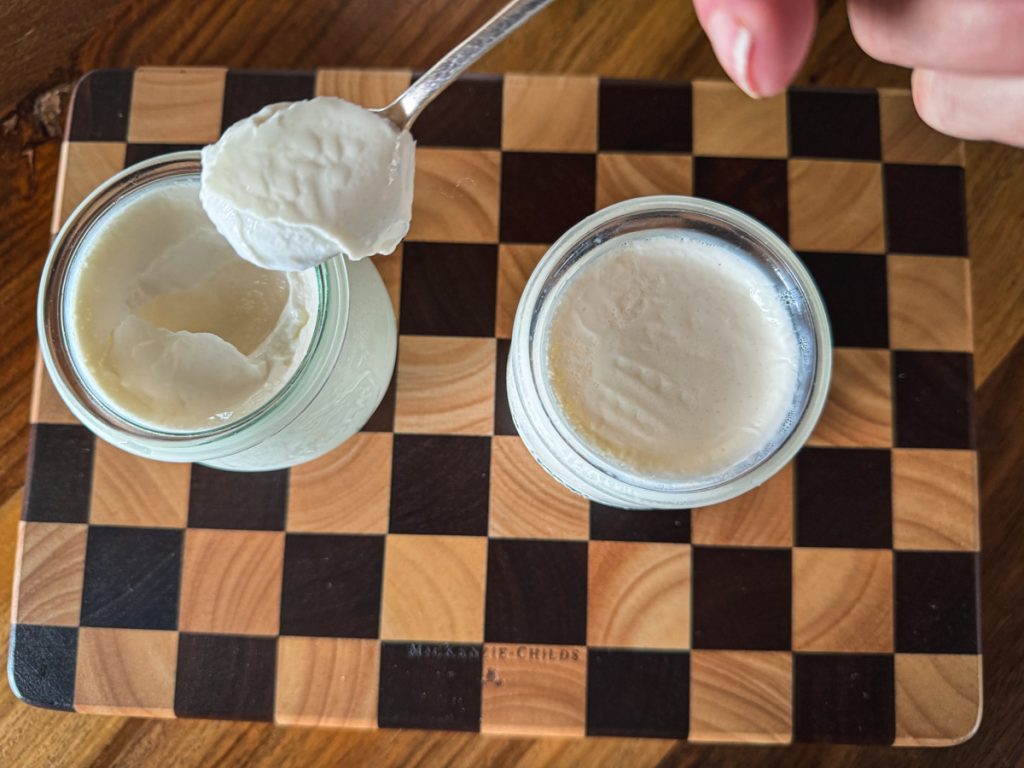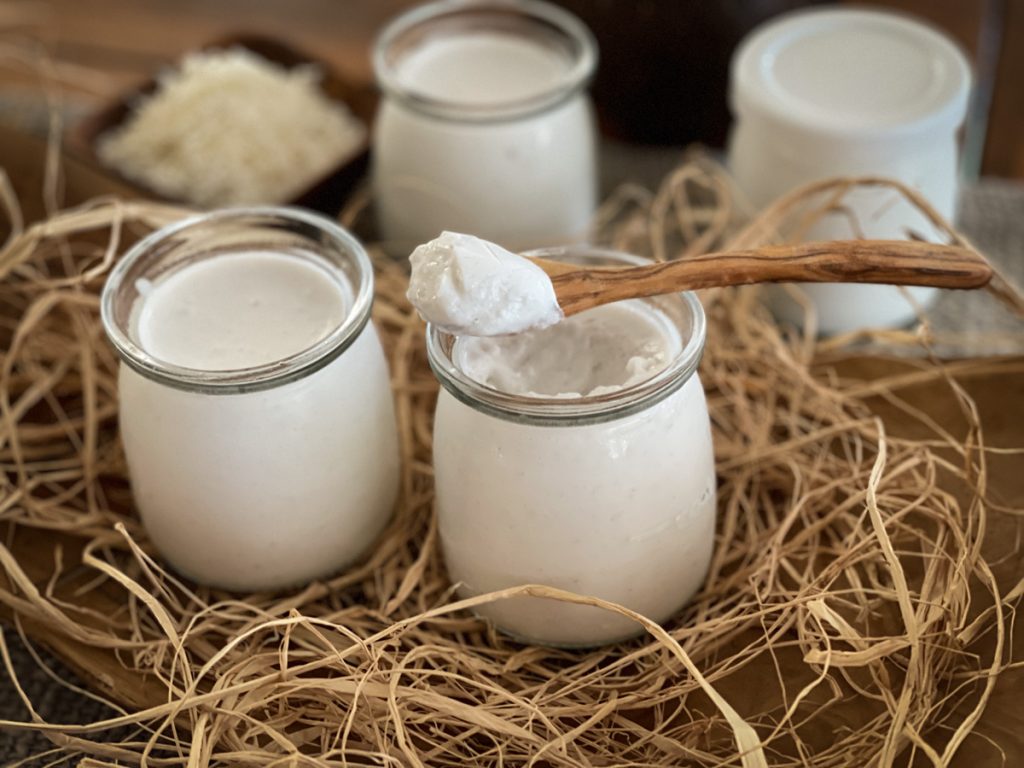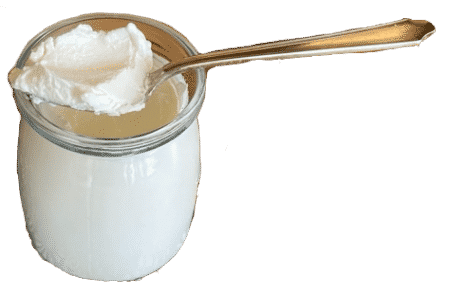Yogurt Plus
Introduction
I love yogurt and have it often. My mom used to eat it for dessert with a spoonful of jam and whipped cream. I in turn do the same and love yogurt in many dishes and meals. This yogurt is very versatile and it only takes 6 hours to make!
I have done a lot of research on yogurt. Many of the world's centenarians have consumed yogurt and kefir daily and often as a dessert or meal.
I love kefir with every fiber of my being and have it every day but there were a couple of strains that kefir didn't have that I wanted. Bifidobacteria and L. Reuteri were two very important strains that I think we need in abundance that isn't in kefir, but what's interesting is kefir helps to feed these strains if you have them. I've written articles about both of them, and now we have two yogurts that have these strains in them. I've made gallons of yogurt but did not expect to experience the wonderful effects of yogurt that I am now experiencing.
Bifidobacteria have long been regarded as one of the most beneficial members of the human gut microbiome. Lower levels of this beneficial bacteria have been shown in obese and diabetic individuals and in individuals taking antibiotics. Also, those suffering from irritable bowel syndrome or inflammatory bowel disease have shown lower levels of bifidobacteria as well. The easiest way to get more bifidobacteria is to take Human milk oligosaccharides (HMOs) for a short period of time and then switch to foods that feed it and keep it strong. You can supplement with HMOs from time to time but paying attention to this species in your gut is very important.
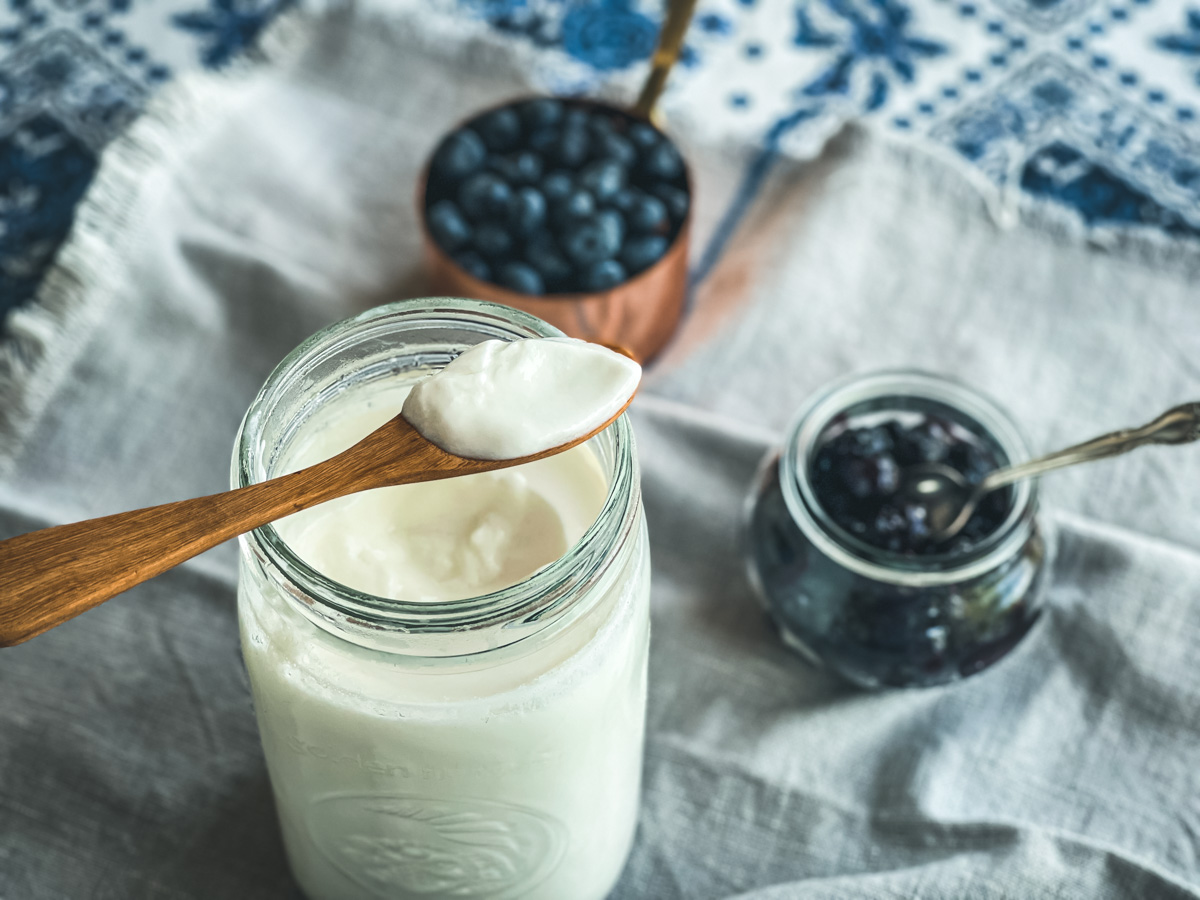
Strains/Ingredients in Yogurt Plus
The L. reuteri in this yogurt is a different strain than the one we have in our LR Superfood Yogurt Starter, (Our LR Superfood Starter is much stronger).
All these are specific strains in Yogurt Plus and were handpicked along with one of my favorite bacteria Bifidobacterium longum. Everybody needs more Bifidobacteria and I have written specifically about how to build up Bifido with prebiotics and yogurt to help keep it strong and steady. Check out this article. HMOs and Bifidobacterium.
If you have a weak immune system Streptococcus thermophilus, L. delbrueckii, L. Plantarum, L. reuteri, and Bifidobacterium have all been shown to benefit your immune system powerfully. This helpful strain fights off viruses, fungi, and parasites that invade the gastrointestinal tract and the urogenital system too. They also help to reduce gut inflammation, decrease pathogen activity and improve overall health.
Purchase
United States:
If you live in the USA, you can order directly from my store. I keep these cultures refrigerated to ensure that they stay alive & fresh while they are waiting for you to adopt them.
Cutting Edge Cultures also has them for sale directly on their website.
You can also get them from Amazon.com, just know that I don't think that the Amazon warehouse keeps them refrigerated.
Refrigeration is always recommended! These cultures will last 24 months in the fridge, even longer in the freezer, but only about two weeks at room temperature.
Canada:
Instructions
You can find even more detailed instructions by clicking here.
Makes: 1 - 1.25 quarts
Preparation time: about 30 minutes preps, 6-8 hours culturing
You’ll need:
- A yogurt maker
- 32 fl oz. - 42 fl oz. (1 quart - 1.25 quarts/ 1 liter - 1.25 liters) of ultra-pasteurized dairy milk (full fat, 2%, or skim), depending on your yogurt maker
- 1 sachet of Yogurt Plus starter culture (or 2 tablespoons of yogurt made with Yogurt Plus)
- A thermometer
Steps:
- Place the milk in a saucepan and gently heat to 180°F. Once the temperature is reached, remove from heat and let it cool to 100°F-110°F.
- Whisk in 1 sachet of Yogurt Plus starter culture. This distributes the good bacteria throughout the milk.
- Place the milk in yogurt jars without lids and incubate in your yogurt maker for 6-8 hours. A consistent, lukewarm temperature is paradise for all the good bacteria, and promotes their growth.
- Remove the jars from the yogurt maker, close the lids, and place the jars in the fridge to cool and set for at least a couple of hours. As the yogurt cools, it will get even thicker! Store in the fridge.
Note: Store the starter culture in the refrigerator or freezer until you're ready to use it.
- Reculture: To make a new batch, repeat these instructions but use 2 tablespoons of yogurt made with Yogurt Plus as your starter.
Equipment
- A yogurt maker
-
or a Instapot with yogurt setting or a Sous Vide device will work too
-
- 32 fl oz. - 42 fl oz. (1 quart - 1.25 quarts/ 1 liter - 1.25 liters) of dairy milk (full fat, 2%, or skim), depending on your yogurt maker
- 1 sachet of Yogurt Plus starter culture (or 2 tablespoons of yogurt made with Yogurt Plus)
- A thermometer
Note: Store the starter culture in the refrigerator or freezer until you're ready to use it.
Recipes
Free Yogurt Recipes eBook!
Get my Free Yogurt eBook when you purchase Yogurt Plus from my store! It has recipes on how to make yogurt and it also has recipes to create some of my favorite yogurt recipes. Fifteen recipes in total and these are some of my favorites.
You can make dairy and non-dairy versions of this yogurt and use them in all the recipes.
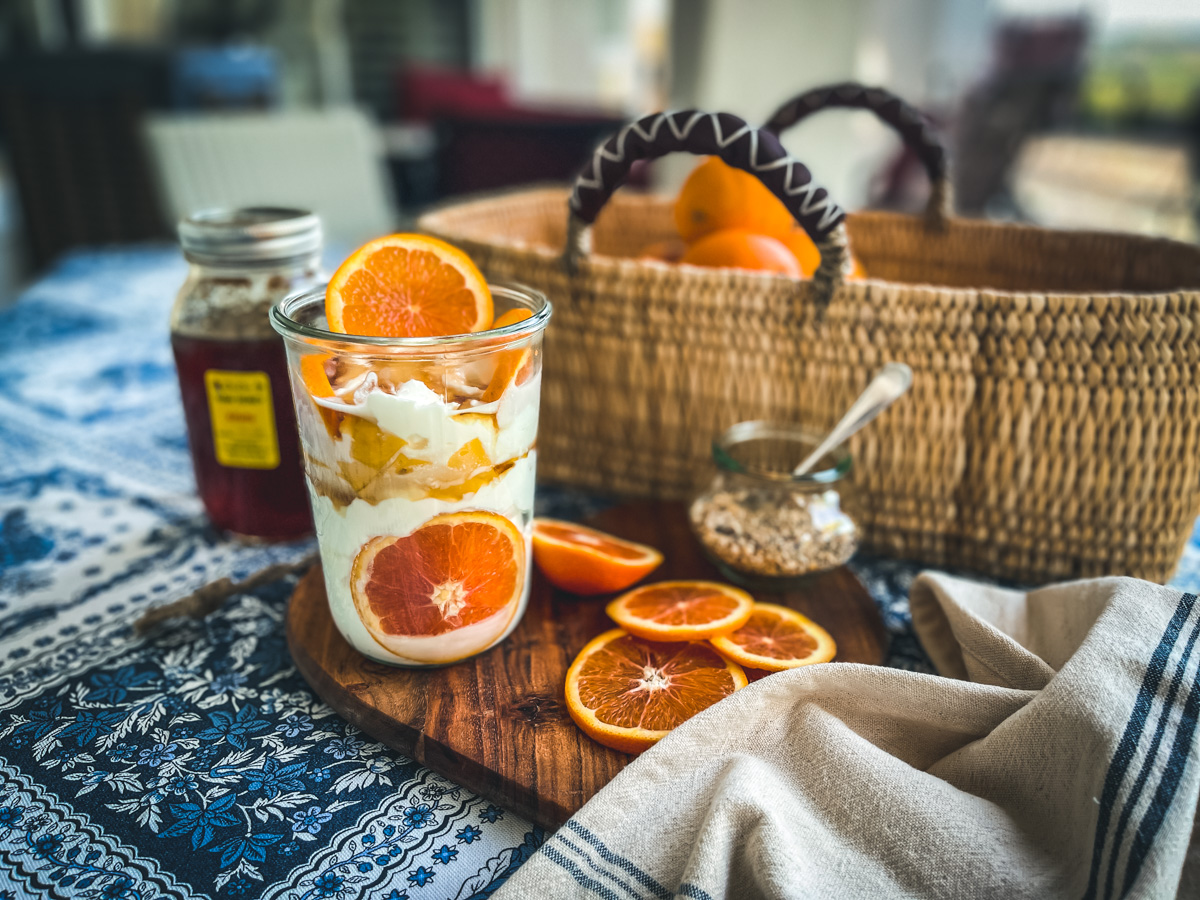
Frequently Asked Questions
- What kind of milk can I use to make yogurt at home? Any type of pasteurized dairy milk can be used with this starter culture such as skim, 1%, 2%, whole milk, or half and half.
- How can I make my yogurt thicker? There are several ways to improve the thickness of the yogurt. Whole milk or adding a little cream can make your yogurt thicker. But don’t use all cream as this doesn’t have enough lactose for the bacteria to form yogurt. You can add a tablespoon of powdered milk for every 8 fluid ounces of milk to help make it thicker. Heating the milk to high temperatures of 160-180°F and holding it there for 20 minutes denatures the proteins, allowing them to form a stronger curd. A higher temperature, held for a longer time, will give you a firmer yogurt.
- How long will finished yogurt last in my refrigerator? In the refrigerator, it should last 7-10 days to allow you to re-culture another batch. It should stay edible for 2-3 weeks
- Can I use more than 1 sachet of starter culture to make yogurt? Do not use more starter than recommended. When you use too much starter it can crowd the bacteria. The result is often a thinner, sometimes bitter, yogurt.
- Can I use my yogurt to revive another culture (such as milk kefir)? No, combining different cultures leads to competition among bacteria. The different bacteria will want to dominate and can kill each other.
- Is the temperature important when culturing yogurt? It's important to stay within the recommended range of 100°F to 110°F when culturing yogurt. Too warm and the bacteria will die. Too cool and the culturing will halt, and will likely not start again and your yogurt will be thin and not form a curd.
- Why do I have to heat pasteurized milk when using the culture? Heating the milk to 180°F will kill any bacteria present in the milk that might compete with the bacteria in the culture. It will also help denature the protein to form a thicker curd. The goal is to destroy unwanted bacteria that could prevent the yogurt from setting or that could grow beside the good bacteria contained in the starter.
- Can I make yogurt without a starter culture? No, either a yogurt starter culture or some previously-made live yogurt is required in order to make yogurt.
- What is a starter culture? A starter culture is a blend of bacteria that starts the culturing process, lowers the pH of the milk, and gives the resulting yogurt its tangy taste and firmer texture.
- How long does an unopened sachet of starter culture keep in the refrigerator? The Best By date is printed on each pouch and on each sachet. Please keep the starter culture refrigerated for optimal shelf life.
- Can I make yogurt without a yogurt maker? You will need a reliable method of keeping the temperature at a constant temperature of 100°F to 110°F. You could try using a yogurt maker, sous vide device, or an Instant Pot.
- What should I do if the yogurt slightly curdles or if the whey separates from the curds? No problem! The yogurt is still good, just stir it to achieve a more even consistency.
- How does the fat content of the milk affect the yogurt? There's a direct correlation between the fat content of the milk that you use, and the creaminess of the resulting yogurt. Whole milk with a higher fat content will result in a rich, creamy yogurt; skim milk will produce a much less creamy texture.
- Should I add flavorings such as fruit, sweeteners, etc. during or after fermentation? Add these after the yogurt is fermented.

